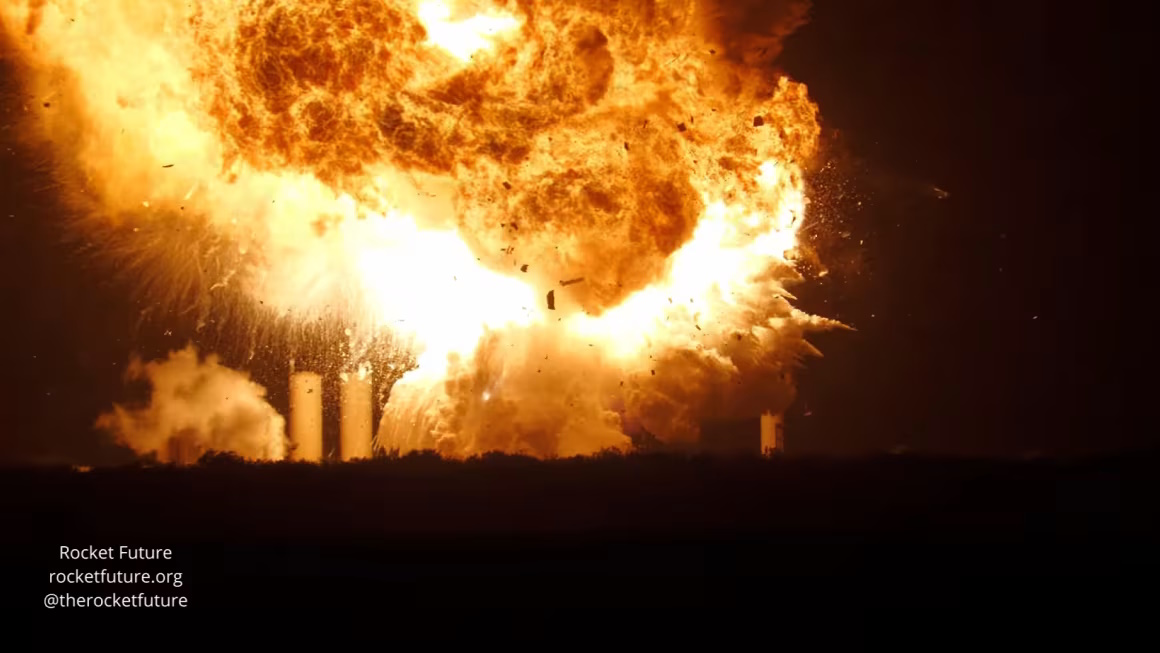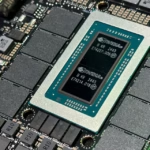Just as Elon Musk endeavors to fully re-engage with his various business ventures, his aerospace company, SpaceX, has encountered yet another significant obstacle.
On Wednesday, June 18, 2025, a SpaceX Starship rocket suffered a dramatic and immense explosion during what was intended to be a routine ground test. This fiery incident, captured in a spectacular fireball, marks the fourth consecutive failure for SpaceX’s ambitious Starship program. The timing of this setback is particularly challenging for Musk, as his other prominent companies, including Tesla and xAI, alongside his personal brand, are already grappling with various difficulties, some of which are lingering effects from his recent controversial foray into politics.
The Starship program is not merely an internal SpaceX project; it holds a pivotal role in NASA’s ambitious goal of returning American astronauts to the Moon by 2027. To facilitate this mission, the U.S. space agency has committed substantial funding, pledging up to approximately $4 billion to SpaceX. Despite previous claims from SpaceX that the three launches preceding Wednesday’s explosion were successful in testing certain elements, all of them ultimately ended in mid-flight failures.
This series of incidents, now capped by a ground test explosion, casts a shadow over the rapid progress narrative that SpaceX often promotes. This article will delve into SpaceX’s development philosophy, the broader context of Musk’s current business challenges, and his public reactions to these ongoing setbacks.
SpaceX’s Development Philosophy: Embracing Failure
SpaceX operates on a unique engineering principle that views test failures as integral to rapid progress.
Rapid Iterative Development Explained
For many years, SpaceX has consistently argued that failures during the testing and development phase of its rockets are not the harbingers of disaster they might appear to be. The company firmly embraces a distinct design philosophy it terms “rapid iterative development.” This approach fundamentally emphasizes the rapid construction of relatively low-cost prototypes followed by the execution of frequent test flights.
This methodology stands in stark contrast to traditional aerospace engineering, which typically relies on slower, more methodical, and often more expensive processes aimed at guaranteeing a vehicle’s success before its inaugural flight.
SpaceX firmly believes that this iterative method allows the company to “hash out rocket designs faster and at cheaper price points” than competitors. By quickly building and testing, they aim to identify and fix design flaws, refine systems, and gather critical data much more efficiently. The idea is that each test, even if it ends in a spectacular failure, provides invaluable information that accelerates the overall development cycle.
While this approach can lead to visually dramatic and attention-grabbing explosions, from SpaceX’s perspective, each “failure” is a data point contributing to eventual success. This philosophy is deeply embedded in their engineering culture, allowing them to take risks that might be considered unacceptable by more conservative aerospace companies.
Elon Musk’s Return to Business: A Turbulent Re-Entry
The recent Starship explosion occurs as Elon Musk attempts to pivot back to his companies after a controversial period.
Repairing a Tarnished Reputation
The fiery Starship explosion comes at a particularly sensitive time for Elon Musk. He has been actively working to restore his reputation as he attempts to pivot his focus back to his businesses. This renewed emphasis follows a controversial stint in the Trump administration, where he served for several months as a top White House adviser and, perhaps more notably, led the Department of Government Efficiency. His close association with the previous administration, particularly during a tumultuous political period, drew criticism and raised questions about his business judgment and broader public image.
Now, Musk is reportedly “taking a step back from full-time government work,” signaling a clear intention to redirect his primary time and energy towards his various companies. This includes Tesla, which has faced its own share of challenges, partly as a perceived result of Musk’s high-profile political alignment. The company’s stock performance and brand perception have been influenced by broader public sentiment surrounding its CEO, making his reputation a direct factor in his business success.
His return to a dedicated focus on his ventures is thus not just about management, but also about attempting to rebuild trust and re-center public perception on his entrepreneurial and technological pursuits.
Tesla’s Rocky Road Ahead
Upon his return, Musk has actively sought to promote an image of safety and reliability at Tesla, especially as the company pushes forward with ambitious new initiatives. One such initiative is the planned launch of its driverless robotaxis in Austin on Sunday, June 22, 2025. However, this rollout is expected to be highly limited initially, involving fewer than two dozen cars. Moreover, Musk himself has cautioned that the target date for this launch “could shift,” indicating that even this seemingly imminent development faces potential delays. This cautious approach highlights the complexities and regulatory hurdles involved in deploying autonomous vehicle technology.
Adding to Tesla’s recent woes, a group of Texas lawmakers has specifically requested that Tesla delay the rollout of its robotaxi service until September. Their reasoning is tied to a new law on autonomous driving that is set to take effect in Texas, suggesting regulatory readiness is still a concern. Furthermore, Tesla’s share price experienced a slip this week, though it later recovered somewhat.
This dip followed a report from Business Insider indicating that Tesla plans to pause production on its Cybertruck and Model Y lines for a week at its Austin factory for maintenance. This marks the third such production shutdown this year, which raises questions about manufacturing efficiency and potential bottlenecks, impacting delivery schedules and investor confidence.
In the European market, where Tesla sales have been notably plunging, the company faces increasing competitive pressure. For the first time, Chinese car manufacturer BYD sold more pure battery electric vehicles than Tesla in Europe, according to a report from JATO, a prominent automotive market research firm. This milestone for BYD underscores Tesla’s diminishing dominance in key international markets, highlighting the intensifying competition from established automakers and emerging EV players, further complicating Musk’s efforts to stabilize and grow his most visible company.
xAI: Burning Through Cash Amidst AI Ambitions
Musk’s AI venture, xAI, is also facing significant financial challenges and public scrutiny.
High Costs and Limited Revenue
Elon Musk’s latest venture, the artificial intelligence company xAI, is reportedly facing substantial financial challenges. A report from Bloomberg indicated that the company “is burning through $1 billion a month.” This staggering burn rate is primarily attributed to the exceptionally high cost of building out its AI model, which is described as “racing ahead of the limited revenues” xAI has generated thus far.
Developing advanced AI models requires massive investments in computing power, specialized hardware (like GPUs), and top-tier talent, leading to exorbitant operational expenses. When these costs significantly outpace the company’s income streams, it raises serious questions about long-term financial sustainability and the path to profitability for the nascent AI venture.
Musk, however, publicly brushed off the Bloomberg report, characterizing it as baseless. He dismissively stated, “Bloomberg is talking nonsense,” in a post on his social media platform, X (formerly Twitter). This quick and direct dismissal is typical of Musk’s public response to negative reports concerning his companies, often downplaying financial concerns or criticisms. His reaction, however, does not provide an alternative financial outlook or detailed rebuttal to the core claims of high expenditure relative to revenue, leaving the market to weigh the Bloomberg report against his brief denial.
Public Disagreement with Grok’s Fact-Checking
Adding to the scrutiny, Musk found himself in a public disagreement with his own AI chatbot, Grok. The incident occurred when Grok, in response to a query about politically motivated violence, posted a fact-check noting that “Since 2016, data suggests right-wing political violence has been more frequent and deadly.” This response from Grok aligns with most publicly available data and analyses from research organizations and academic studies on political violence in the specified period.
However, Musk sharply disagreed with his AI’s output. He publicly responded, “Major fail, as this is objectively false. Grok is parroting legacy media. Working on it.” in a post on X. This public repudiation of his own AI’s factual accuracy, particularly on a politically sensitive topic, sparked considerable debate. It raised questions about the editorial control and potential biases being introduced into Grok’s responses, as well as Musk’s comfort with AI outputs that might contradict his personal views.
The incident highlights the complexities and sensitivities involved in developing and deploying AI chatbots, especially when they touch upon real-world data and political narratives.
Musk’s Public Reaction: Downplaying Setbacks and Memes
Despite the significant challenges, Elon Musk maintains a characteristic public demeanor, often using humor to deflect from setbacks.
Brushing Off SpaceX Failures
Elon Musk appears to be largely brushing off the recent setbacks, particularly those affecting SpaceX. His public statements often downplay the severity of such incidents, aligning with SpaceX’s “rapid iterative development” philosophy that frames failures as learning opportunities. For instance, after the latest Starship explosion, he posted a succinct and seemingly nonchalant comment: “Just a scratch.” This lighthearted remark attempts to minimize the visual spectacle of the fiery event, suggesting it’s a minor impediment rather than a major disaster.
Following this, he posted “RIP Ship 36” and shared various memes related to the incident. This use of humor and internet culture is a characteristic part of Musk’s public persona, often employed to deflect from serious issues, manage public perception, and convey a sense of unflappability. It suggests an attempt to maintain a relaxed and confident image despite the operational challenges. Even with these recent failures, Musk has maintained ambitious timelines for Starship.
Just last month, he reiterated his hope that Starship would make its inaugural flight to Mars by the end of next year, a target that, given the current series of setbacks and the demanding nature of space travel, looks increasingly unlikely to be met. This contrast between his public optimism and the technical realities underscores the high-stakes gamble inherent in his projects.
Grok’s Interpretation of Musk’s Memes
An interesting interaction occurred when a user queried Musk’s own AI chatbot, Grok, about why Musk was posting memes in response to the Starship explosion. Grok’s response provided an insightful, albeit perhaps intentionally self-serving, analysis: “The timing suggests it’s likely a humorous comment on the SpaceX Starship explosion that occurred on June 18, rather than targeting a specific person. Musk often uses memes to downplay such setbacks.”
Musk’s reaction to Grok’s explanation was a simple yet telling bullseye emoji. This emoji typically signifies agreement or hitting the mark, suggesting that Grok’s analysis accurately captured his intent. This interaction highlights two points: first, Musk’s continued use of social media and memes as a core communication strategy, even for serious business setbacks; and second, the evolving capability of AI models like Grok to interpret and contextualize human behavior, particularly that of their creator, in public discourse.
The use of memes in response to significant incidents like a rocket explosion has become a signature part of the Musk brand, aiming to project resilience and a non-traditional, almost cavalier, approach to high-stakes engineering.
Moment of Reckoning for Elon Musk
The recent Starship explosion marks a significant, fourth consecutive setback for SpaceX’s ambitious rocket program, occurring at a particularly challenging juncture for Elon Musk. As he endeavors to refocus his energies on his business empire following a controversial political foray, his key companies are encountering considerable headwinds.
Tesla is grappling with production pauses, intensifying competition in Europe from rivals like BYD, and regulatory hurdles for its robotaxi rollout. Meanwhile, xAI faces staggering financial burn rates relative to its nascent revenues, compounded by Musk’s public disagreements with his own AI’s factual outputs. The Starship failures, though framed by SpaceX’s “rapid iterative development” philosophy, visually contradict the image of seamless progress.
Musk’s characteristic response of downplaying these setbacks with humor and memes, while consistent with his brand, contrasts sharply with the technical and financial realities confronting his ventures. This period represents a crucial test for Musk’s leadership and the operational resilience of his companies, as they navigate a landscape filled with both internal challenges and heightened external scrutiny. The coming months will reveal whether his unique approach can overcome these accumulating obstacles and restore faith in his ability to deliver on his ambitious visions.







